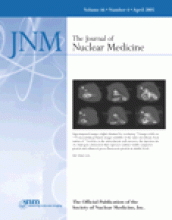Abstract
High photon attenuation and scatter in obese patients affect image quality. The purpose of the current study was to optimize lutetium orthosilicate (LSO) PET image acquisition protocols in patients weighing ≥91 kg (200 lb). Methods: Twenty-five consecutive patients (16 male and 9 female) weighing ≥91 kg (200 lb; range, 91–168 kg [200–370 lb]) were studied with LSO PET/CT. After intravenous injection of 7.77 MBq (0.21 mCi) of 18F-FDG per kilogram of body weight, PET emission scans were acquired for 7 min/bed position. Single-minute frames were extracted from the 7 min/bed position scans to reconstruct 1–7 min/bed position scans for each patient. Three reviewers independently analyzed all 7 reconstructed whole-body images of each patient. A consensus reading followed in cases of disagreement. Thus, 175 whole-body scans (7 per patient) were analyzed for number of hypermetabolic lesions. A region-of-interest approach was used to obtain a quantitative estimate of image quality. Results: Fifty-nine hypermetabolic lesions identified on 7 min/bed position scans served as the reference standard. Interobserver concordance increased from 64% for 1 min/bed position scans to 70% for 3 min/bed position scans and 78% for 4 min/bed position scans. Concordance rates did not change for longer imaging durations. Region-of-interest analysis revealed that image noise decreased from 21% for 1 min/bed position scans to 14%, 13%, and 11% for, respectively, 4, 5, and 7 min/bed position scans. When compared with the reference standard, 14 lesions (24%) were missed on 1 min/bed position scans but only 2 (3%) on 4 min/bed position scans. Five minute/bed position scans were sufficient to detect all lesions identified on the 7 min/bed position scans. Conclusion: Lesion detectability and reader concordance peaked for 5 min/bed position scans, with no further diagnostic gain achieved by lengthening the duration of PET emission scanning. Thus, 5 min/bed position scans are sufficient for optimal lesion detection with LSO PET/CT in obese patients.
Footnotes
Received Jul. 30, 2004; revision accepted Dec. 8, 2004.
For correspondence or reprints contact: Johannes Czernin, MD, UCLA School of Medicine, Nuclear Medicine, AR 128 CHS, 10833 Le Conte Ave., Los Angeles, CA 90095-6942.
E-mail: jczernin{at}mednet.ucla.edu







